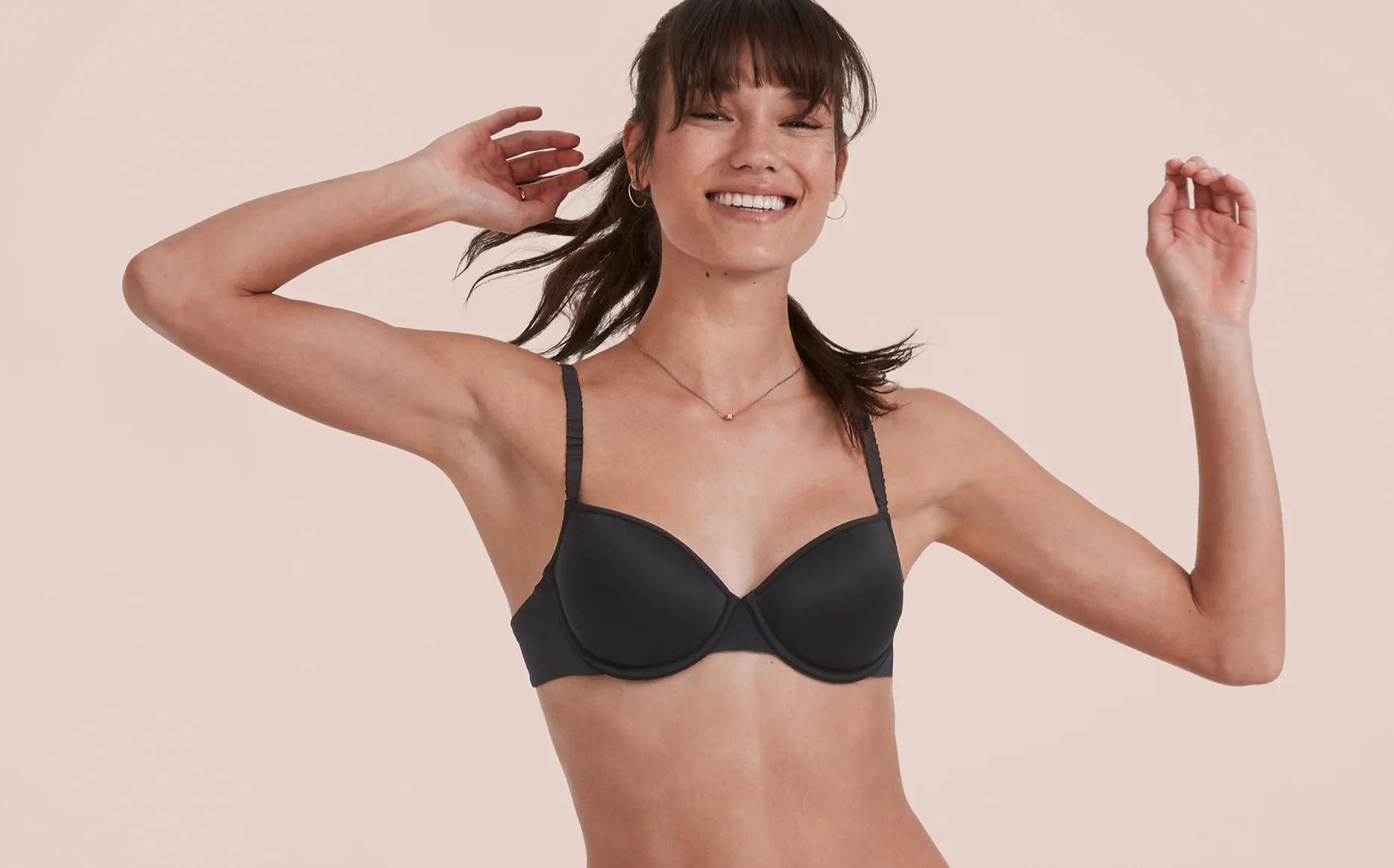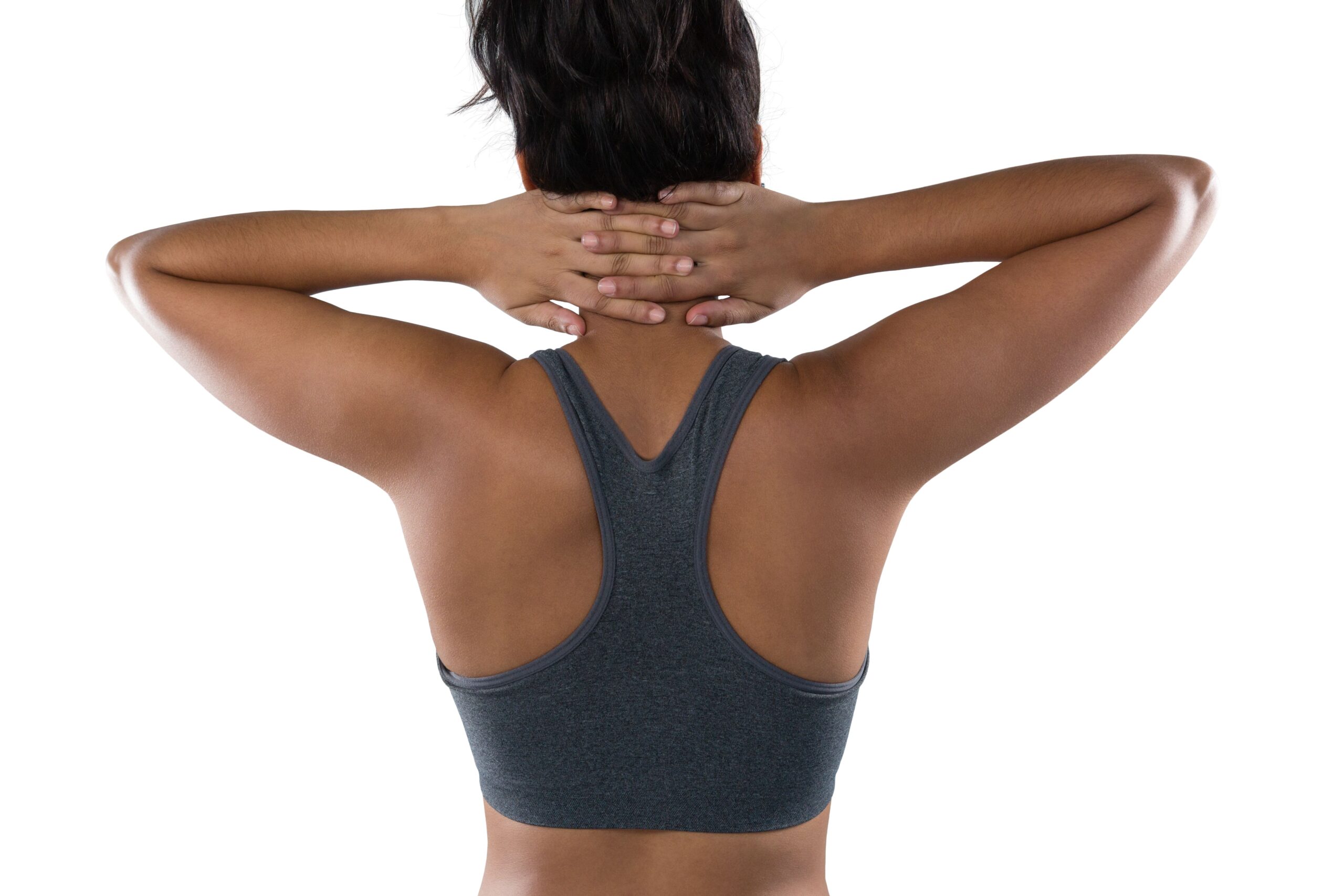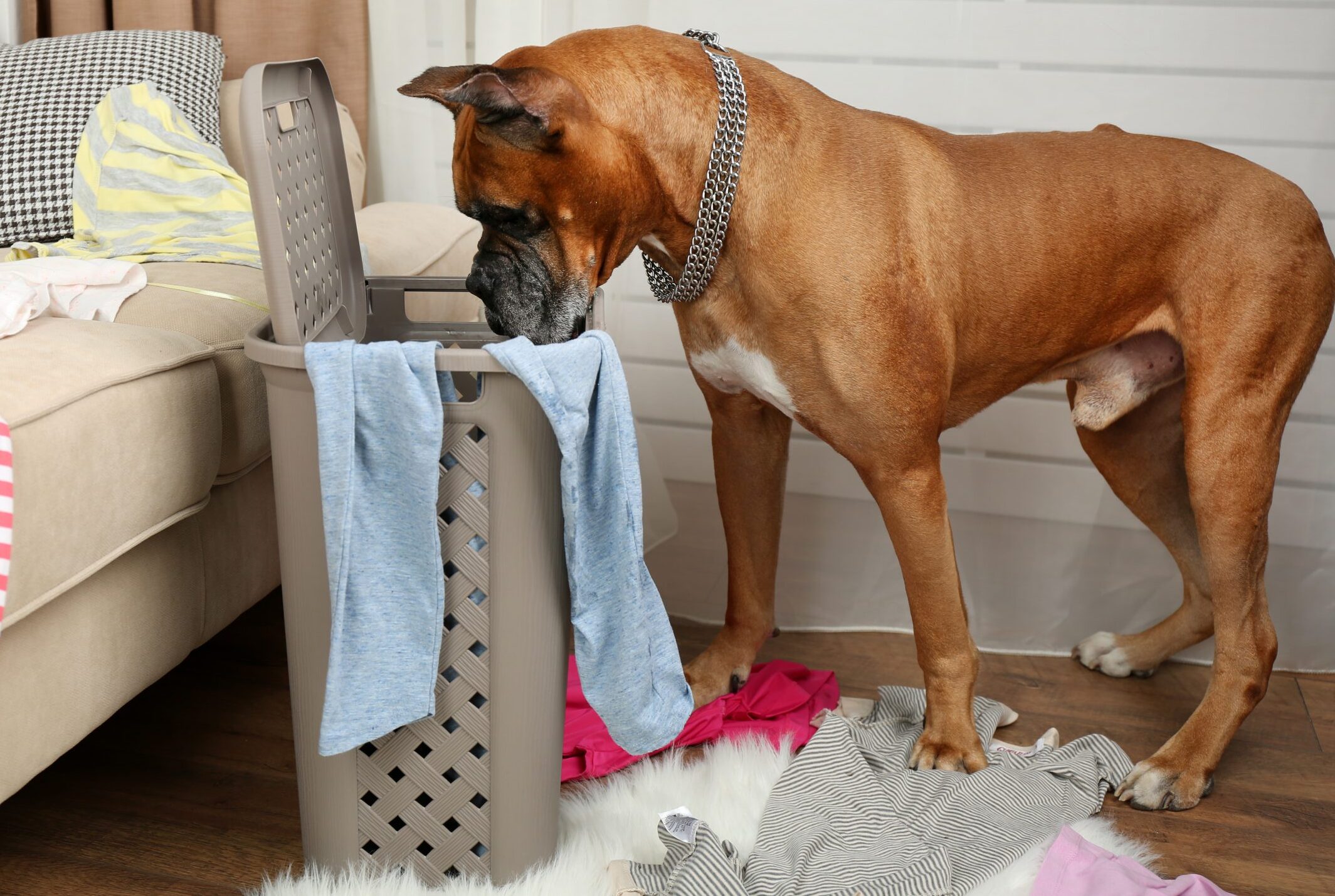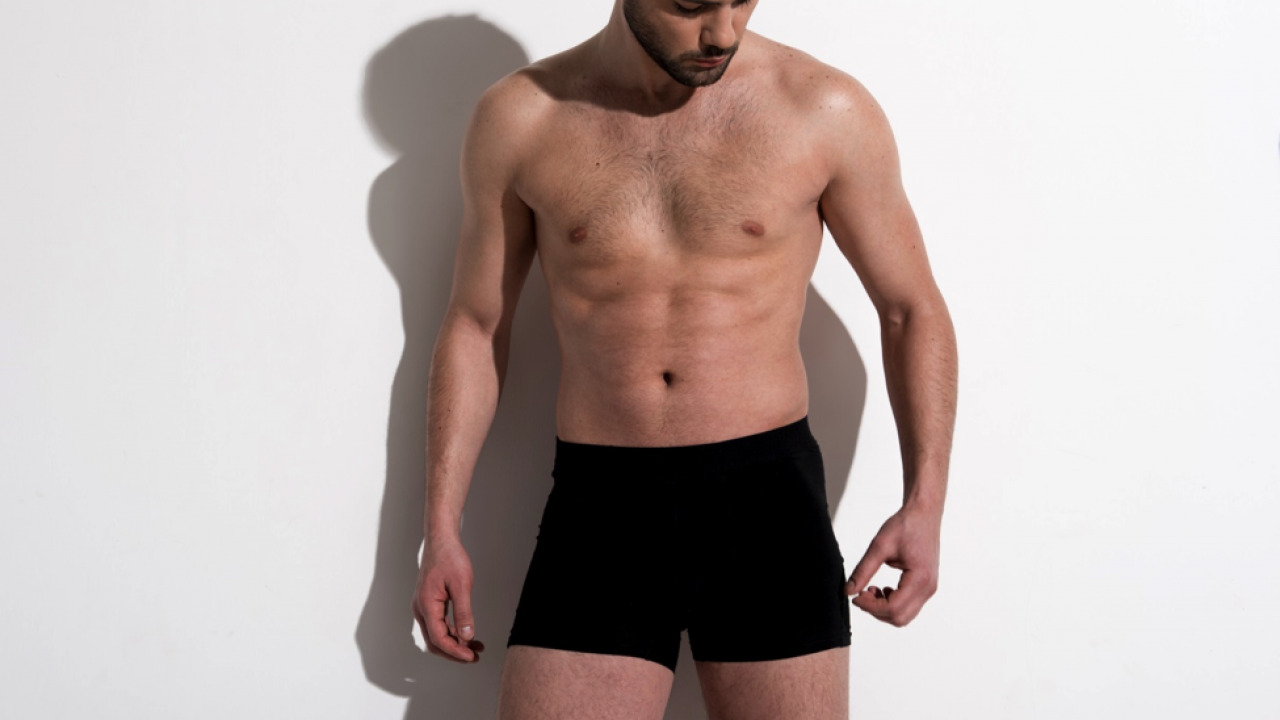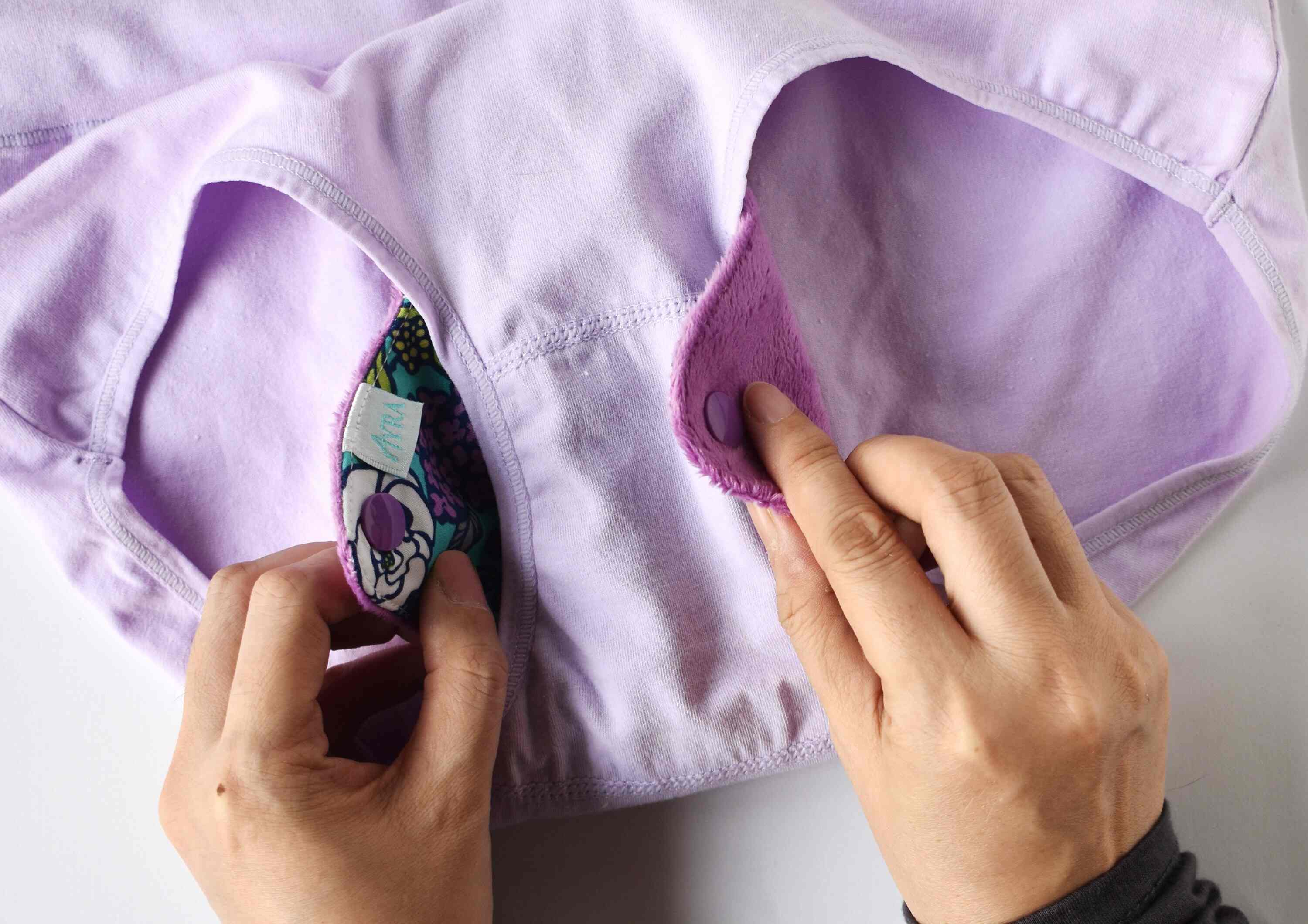Home>Women's Underwear>Bras>Why Does My Bra Band Roll Up
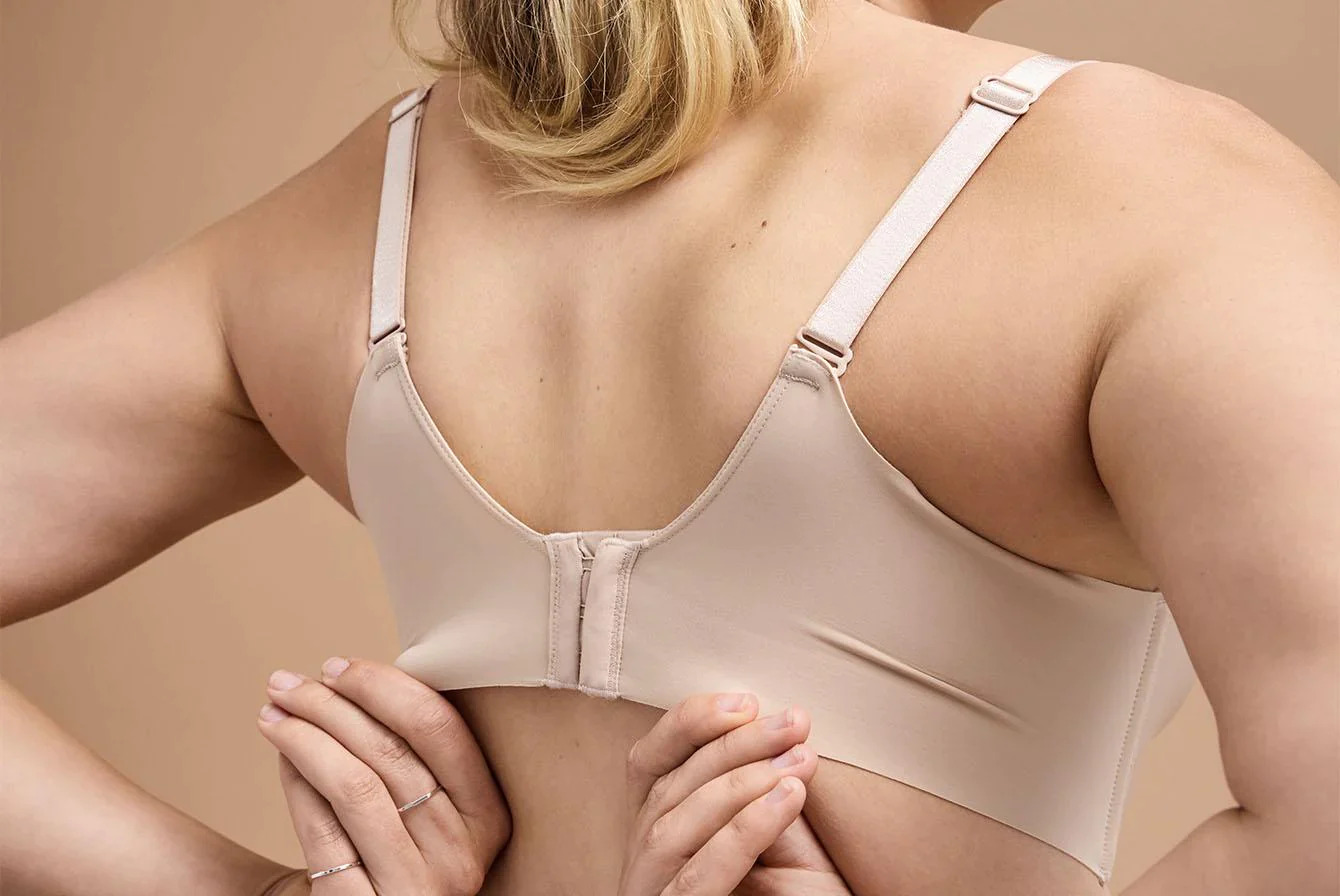

Bras
Why Does My Bra Band Roll Up
Modified: August 2, 2023
Discover why your bra band rolls up and find solutions to keep it in place. Get expert tips and advice on bras for ultimate comfort and support.
(Many of the links in this article redirect to a specific reviewed product. Your purchase of these products through affiliate links helps to generate commission for Under-tec.com, at no extra cost. Learn more)
Table of Contents
Introduction
When it comes to wearing a bra, one of the most common issues that many women face is the dreaded bra band rolling up. It can be frustrating and uncomfortable, and may even lead to the urge to constantly adjust the bra throughout the day. But why does this happen?
To understand why bra bands roll up, it’s important to first understand what the bra band is and its function. The bra band, also known as the underband, is the elastic fabric that wraps around the ribcage, providing support and anchoring the bra in place. Its main purpose is to ensure that the bra stays in position and distributes the weight of the breasts evenly.
There are several factors that can contribute to bra band rolling. Ill-fitting bra sizes, poor quality materials, weight fluctuations, and inadequate support are just a few of the reasons why you may experience this issue. In this article, we will explore these causes in more detail and provide some practical tips on how to prevent bra band rolling.
Understanding the underlying causes behind bra band rolling is crucial for finding a solution that works for you. By addressing these issues, you can ensure that your bra fits correctly, provides optimum support, and allows you to go about your day with comfort and confidence.
Understanding Bra Bands
Before delving into the reasons why bra bands roll up, it’s essential to have a clear understanding of what bra bands are and their significance in providing support.
The bra band is the elastic part of the bra that wraps around the torso, just below the bust. It is typically made of a combination of elastic fibers and other materials, such as nylon or spandex, to provide flexibility, stretch, and support.
The primary function of the bra band is to anchor the bra in place and offer support to the breasts. It acts as a foundation, distributing the weight of the breasts across the chest and back. This helps prevent strain on the shoulder straps and ensures better posture.
In addition to its supportive role, the bra band also plays a crucial role in determining the overall fit and comfort of the bra. The band should fit snugly around the ribcage, providing a secure base for the cups and preventing the bra from shifting or riding up. If the band is too loose or too tight, it can lead to various issues, including bra band rolling.
A well-fitting bra band should sit parallel to the floor and be level all the way around the body. It should not dig into the skin or leave marks, nor should it ride up or roll. Achieving the perfect fit requires not only finding the right band size but also considering factors such as cup size, strap width and length, and the placement of the underwire, if applicable.
It’s important to note that different bra styles or brands may have slightly different band constructions. For example, some bras may feature wide bands for extra support, while others may have narrower bands for a more minimalistic and lightweight feel. Understanding the construction and design of the bra band can help you choose the right style for your needs.
By understanding the role and characteristics of bra bands, you will be better equipped to identify the causes of bra band rolling and take the necessary steps to address the issue. Remember, a well-fitting and supportive bra band is essential for comfort, proper breast support, and overall breast health.
Causes of Bra Band Rolling
Bra band rolling can be attributed to a range of factors, from ill-fitting bra sizes to poor quality materials. Understanding these causes will help you identify the root of the problem and find the appropriate solutions.
Ill-Fitting Bra Size: One of the most common reasons for bra band rolling is wearing the incorrect bra size. If your bra band is too loose, it won’t provide the necessary support and may shift or roll up throughout the day. On the other hand, if the band is too tight, it can dig into the skin and cause discomfort. Ensure you undergo a proper bra fitting to find the right band size for optimal comfort and support.
Poor Quality Materials: The quality of the bra band can also impact its ability to stay in place. Low-quality materials may lack sufficient elasticity or have weaker construction, making them more prone to rolling. Opt for bras made from high-quality materials that provide ample stretch and durability.
Weight Fluctuations: Changes in weight can affect the fit of the bra band. If you have recently lost or gained weight, your bra size may have changed, leading to an ill-fitting bra band. Regularly reassess your bra size and make adjustments as needed to ensure a proper fit and prevent rolling.
Inadequate Support: If your bra lacks adequate support, it may not be able to hold the breasts in place, causing the band to shift or roll. This is particularly important for women with larger breasts who need extra support to distribute the weight evenly. Consider opting for bras with wider bands, underwire, or reinforced side panels for added support.
Incorrect Band Placement: Sometimes, bra band rolling can occur due to the band being positioned too high or too low on the torso. Ensure that the band sits parallel to the floor and rests just below the bust. Adjust the straps and band as needed to find the optimal position for your body.
By understanding the causes of bra band rolling, you can address the issue and find solutions that work for you. Remember, a well-fitting bra with high-quality materials and adequate support will help prevent band rolling and provide you with the comfort and confidence you deserve.
Ill-Fitting Bra Size
One of the primary causes of bra band rolling is wearing an ill-fitting bra size. When the band size is wrong, it can lead to discomfort, lack of support, and band rolling.
A bra with a band that is too loose will fail to provide the necessary support. As a result, the band may shift and roll up as you move throughout the day. This can not only be frustrating and uncomfortable but also affect the overall fit and support of the bra.
On the other hand, a bra with a band that is too tight can dig into the skin, leaving indentations and causing discomfort. It may also restrict movement and circulation, making it even more uncomfortable to wear. In response, your body may try to adjust and alleviate the discomfort by causing the band to roll up.
The key to preventing bra band rolling due to an ill-fitting size is to undergo a proper bra fitting. This involves measuring both your band size and cup size to find the perfect fit. Keep in mind that your bra size may change over time, so regular fittings are essential.
When determining your band size, measure around your ribcage just below the bust, ensuring the measuring tape is snug but not too tight. This measurement will give you an accurate band size. Combine this with your cup size, using proper techniques for measuring cup size, to find the ideal bra size.
Remember that bra sizes may vary between brands and styles, so it’s essential to try on different bras to find the one that fits you best. The band should sit parallel to the floor, feel firm but comfortable, and provide the necessary support without digging into your skin.
By wearing the correct bra size, you can ensure that the band fits properly and prevents rolling. This will not only enhance your comfort and confidence but also contribute to healthier breast support and overall well-being.
Poor Quality Materials
The quality of the materials used in the construction of a bra can significantly impact its ability to stay in place and prevent band rolling. Bras made with poor quality materials may lack the necessary elasticity and durability, making them more prone to rolling.
Low-quality elastic materials may quickly lose their elasticity over time or fail to provide enough stretch to keep the band in place. As a result, the band may stretch out, lose its shape, and start to roll up as you move throughout the day.
In addition to the elasticity of the materials, the overall construction and stitching of the bra can also play a role in preventing or causing band rolling. Poorly constructed bras may have weak stitching that fails to hold the elastic in place, leading to the band rolling up or shifting out of position.
Opting for bras made from high-quality materials can help alleviate the issue of band rolling. Look for bras that use elastic fibers such as nylon or spandex, as these materials provide both stretch and recovery, ensuring that the band maintains its shape and stays in place. Bras with reinforced stitching and sturdy construction are also more likely to hold up well over time.
When shopping for bras, pay attention to the feel and quality of the materials. Examine the elasticity of the band and the overall construction of the bra. High-quality bras may be slightly more expensive, but they are worth the investment for their durability and ability to prevent band rolling.
Regularly inspect your bras for signs of wear and tear. If you notice any stretches, frays, or weakened areas in the band, it may be time to replace the bra. Taking care of your bras by following proper washing instructions and handling them gently will also help prolong their lifespan and prevent premature band rolling due to material degradation.
By choosing bras made from high-quality materials and ensuring their proper care, you can minimize the risk of band rolling and enjoy bras that provide the necessary comfort, support, and durability.
Weight Fluctuations
Weight fluctuations can have a significant impact on the fit of your bra, which in turn can lead to bra band rolling. Whether you’ve experienced weight gain or weight loss, it’s essential to take these changes into account and make the necessary adjustments to your bra size.
If you have recently gained weight, your bra band may feel tighter than before. This can cause the band to dig into your skin and create discomfort. As a result, the band may roll up as your body tries to alleviate the pressure and irritation. In this case, it’s advisable to measure your bra size again and find a band size that offers a comfortable fit.
On the other hand, weight loss can lead to a loose-fitting bra band. As the band becomes looser, it loses its ability to stay in place and may roll up throughout the day. If you’ve experienced significant weight loss, it’s crucial to get properly fitted for a new bra to ensure that the band provides the necessary support and avoids rolling.
Regularly reassessing your bra size is vital to accommodate weight fluctuations and maintain optimal comfort. If you’re in the process of losing or gaining weight, consider using bra extenders or adjustable band bras that can adapt to changes in your body shape.
Additionally, it’s important to note that weight fluctuations can affect not only the band size but also the cup size of your bra. When there are changes in breast volume due to weight fluctuations, resizing both the band and cup will help ensure a proper fit and prevent band rolling.
Being aware of your body and regularly checking your bra fit will help you stay comfortable and avoid any discomfort caused by band rolling due to weight fluctuations. Remember to adjust your bra size accordingly, and consider seeking the assistance of a professional bra fitter if needed.
By addressing the impact of weight fluctuations on your bra size, you can find the right fit and minimize the risk of band rolling. A well-fitting bra will provide the necessary support and ensure you can go about your day with comfort and confidence.
Inadequate Support
Inadequate support from your bra can contribute to the problem of band rolling. When a bra fails to provide sufficient support, the weight of your breasts may cause the band to shift and roll up.
This issue is particularly common for women with larger breasts, as they require more support to distribute the weight evenly. If you’re experiencing band rolling, it may be a sign that your bra isn’t providing adequate support for your breast size.
There are several factors that can contribute to inadequate support from your bra. One of them is choosing bras with narrow or flimsy bands that don’t have enough structure to hold your breasts firmly in place. Consider opting for bras with wider bands that provide more stability and support.
Another factor to consider is the presence of an underwire. Underwire bras can offer additional support by lifting and shaping the breasts. However, if the underwire is ill-fitted or uncomfortable, it can exacerbate band rolling. Ensure that the underwire encloses your breasts fully and lies flat against your ribcage without poking or digging into your skin.
Alternatively, some wireless bras can also provide adequate support, particularly if they have features such as reinforced side panels or a supportive band. Look for bras with sturdy construction and cups that provide a secure and comfortable fit.
Regularly assessing your bra’s support level is essential. Over time, bras may lose their elasticity or structure, resulting in reduced support. It’s important to replace bras that have become worn out and no longer provide the necessary support.
In addition to choosing bras with appropriate support, it’s also beneficial to strengthen your back and core muscles. Engaging in exercises that target these muscle groups can help improve overall posture and reduce strain on your bra band. This, in turn, can minimize the risk of band rolling.
By ensuring that your bra offers adequate support, you can mitigate the occurrence of band rolling. Investing in well-fitting, supportive bras and incorporating exercises to strengthen your muscles will help you achieve better comfort, support, and confidence.
Tips for Preventing Bra Band Rolling
Dealing with bra band rolling can be frustrating, but there are several tips and strategies you can implement to prevent this issue and ensure a comfortable and supportive fit.
Proper Bra Size Measurement: Start by undergoing a professional bra fitting or measuring yourself accurately at home. Take regular measurements as weight fluctuations or body changes occur. Ensuring that you are wearing the correct bra size is crucial for preventing band rolling.
Choosing High-Quality Bras: Opt for bras made from high-quality materials that offer sufficient stretch and durability. Look for sturdy construction, adjustable bands, and supportive features such as underwire or reinforced side panels.
Regular Bra Fitting: Don’t assume that your bra size will remain the same over time. It’s important to reassess your size regularly, as weight fluctuations, pregnancy, and other factors can impact your body shape and bra fit. Aim for a bra fitting at least once a year to ensure the best fit.
Strengthening the Back and Core Muscles: Engage in exercises that target your back and core muscles to improve posture and provide better support for your bra. This can help minimize the risk of band rolling and promote overall comfort and stability.
Avoiding Excessively Tight Bands: While it’s important to have a snug-fitting band, avoid wearing bras with bands that are excessively tight. A band that is too tight can dig into the skin and increase the likelihood of band rolling. Find the right balance of comfort and support.
Adjusting Strap Length and Positioning: Ensure that your bra straps are adjusted properly and provide the necessary lift and support. Straps that are too tight or too loose can affect the fit of the bra band and lead to rolling. Regularly check and adjust the strap length as needed.
Rotating Your Bras: By rotating between different bras, you give each one time to rest and recover its elasticity. This can help prolong the life of your bras and minimize the occurrence of band rolling due to stretched out elastic.
Proper Bra Care: Follow the care instructions provided for your bras to maintain their shape and elasticity. Gentle hand washing or using a lingerie bag for machine washing can help prevent stretching or damage to the band.
By implementing these tips and strategies, you can significantly reduce the likelihood of band rolling and enjoy bras that provide comfort, support, and a secure fit. Remember that each individual is unique, so it may take some trial and error to find the perfect bra and fit that works best for you.
Proper Bra Size Measurement
A proper bra size is the foundation for preventing band rolling and ensuring a comfortable and supportive fit. Taking accurate measurements and finding the right bra size is essential for every woman.
There are a few key steps to follow when measuring your bra size:
1. Band Measurement: Take a measuring tape and wrap it around your torso, just below the bust. Make sure the tape is snug but not too tight. This measurement will give you your band size. If the measurement falls between whole numbers, round it up to the nearest even number.
2. Bust Measurement: With the measuring tape, measure around the fullest part of your bust. Make sure the tape is level and not too tight. This measurement will give you an indication of your cup size.
3. Calculate Cup Size: Subtract your band measurement from your bust measurement. Each inch difference corresponds to a cup size. For example, if the difference is 1 inch, your cup size would be A; 2 inches would be B, and so on. Refer to a bra sizing chart to determine your cup size accurately.
It’s important to note that bra sizes can vary between brands and even between different styles from the same brand. Thus, trying on different bras and styles is crucial to finding the perfect fit.
When trying on bras, pay attention to how the band fits. It should feel snug but not too tight, with enough room to slide two fingers underneath it comfortably. The band should sit parallel to the floor and not ride up or roll.
Additionally, ensure that the cups provide full coverage and contain the entire breast tissue without any spillage. The underwire, if present, should encase the breast tissue fully and lie flat against the ribcage without digging into the skin.
Remember that your bra size may change over time due to factors such as weight fluctuations, pregnancy, and aging. It’s important to reassess your bra size regularly, ideally at least once a year.
Seeking the assistance of a professional bra fitter can also be beneficial, especially if you’re unsure about your measurements or experiencing difficulties finding the right fit. They have the expertise to help you identify any specific fitting challenges and recommend suitable styles and sizes.
By taking the time to measure your bra size accurately and regularly reassessing it, you can ensure that your bras provide the necessary support and minimize the risk of band rolling. Wearing the correct bra size will enhance your comfort, confidence, and overall well-being.
Choosing High-Quality Bras
The quality of the bras you choose plays a crucial role in preventing band rolling and ensuring long-lasting comfort and support. Opting for high-quality bras made from durable materials will significantly improve your wearing experience.
When it comes to selecting high-quality bras, there are several factors to consider:
1. Material: Look for bras made from high-quality materials that offer excellent stretch and recovery. Common materials used in bras include nylon, spandex, and polyester blends. These materials provide a good balance of comfort, support, and durability.
2. Elasticity: The elasticity of the bra’s band is essential for preventing band rolling. Ensure that the elastic used in the band has sufficient stretch and bounce-back to maintain its shape over time. The band should be able to hug your body comfortably without losing elasticity or becoming loose.
3. Construction: Examine the construction of the bras you are considering. Look for sturdy stitching, secure closures, and well-designed cups. Bras with reinforced side panels or a firm underband can provide additional stability and support, reducing the likelihood of band rolling.
4. Adjustable Features: Adjustable straps and closure options are essential for achieving the ideal fit. Look for bras that offer adjustable straps, allowing you to customize the level of support and lift. Bras with multiple closure options, such as hooks and clasps, provide flexibility to accommodate changes in your body shape or preferences.
5. Brand Reputation: Research and choose reputable brands with a proven track record of producing high-quality bras. Read customer reviews and seek recommendations from trusted sources. Established brands often have rigorous quality control measures in place to ensure consistent fit, comfort, and durability.
6. Comfort: Comfort is paramount when it comes to selecting bras. Pay attention to details such as the softness of the fabric, the presence of padded straps or underwire casing, and any potential areas of irritation. The bra should feel comfortable against your skin, with no rough edges or overly tight areas that could contribute to band rolling.
7. Price: While high-quality bras will generally cost more, they are an investment worth making for long-term comfort and support. Keep in mind that a higher price often reflects better materials, construction, and attention to detail.
Taking the time to research and choose high-quality bras will ensure that you have bras that provide optimal support, comfort, and longevity. By investing in well-made, reputable bras, you can minimize the risk of band rolling and enjoy bras that truly meet your needs and exceed your expectations.
Regular Bra Fitting
Regular bra fittings are essential for maintaining the perfect fit and preventing band rolling. Our bodies can change over time due to factors such as weight fluctuations, pregnancy, and aging. Therefore, it’s crucial to reassess our bra size regularly to ensure optimal comfort and support.
Experts recommend getting a professional bra fitting at least once a year. During a bra fitting, a trained fitter will measure your band and cup size to determine the most suitable fit for you.
However, if you prefer to measure yourself at home, there are a few steps you can follow. Start by measuring your band size by wrapping a measuring tape snugly around your ribcage just below your bust. Round up the measurement to the nearest even number to get your band size.
Next, measure your bust size by wrapping the tape around the fullest part of your breasts. Ensure that the tape is parallel to the floor and not too tight. Subtract your band measurement from your bust measurement to determine your cup size. Each inch difference typically corresponds to a specific cup size.
Keep in mind that bra sizing may vary between brands and styles, so it’s important to try on different bras to find the perfect fit. Look for bras that have a snug-fitting band that sits level all around your torso. The underwire, if present, should enclose your breasts fully and lie flat against your ribcage without digging into your skin.
Regularly reassessing your bra size will help you identify any changes in your body shape and adjust accordingly. If you notice signs such as band rolling, discomfort, or spillage, it’s an indication that you may need to re-evaluate your bra size.
In addition to getting fitted, it’s also important to be aware of the signs that indicate your bra may no longer fit properly. These include the band feeling loose, the straps falling off your shoulders, or the cups wrinkling or gaping. If you experience any of these issues, it’s a good idea to schedule a bra fitting or measure yourself to ensure you’re wearing the correct size.
Remember that proper bra fitting is essential not only for preventing band rolling but also for overall comfort, support, and maintaining the health of your breasts. Regularly checking and updating your bra size will help you find bras that fit like a dream and boost your confidence throughout the day.
Strengthening the Back and Core Muscles
Engaging in exercises to strengthen your back and core muscles can have a significant impact on preventing band rolling and improving your overall posture and support. By targeting these muscle groups, you can enhance the stability of your bra band and reduce strain on the shoulders and back.
Back Strengthening Exercises: Exercises such as rows, lat pull-downs, and reverse flys can help strengthen the muscles in your upper back. These exercises target the muscles that support the bra band and improve overall posture. Additionally, exercises that target the lower back, such as supermans or back extensions, can also contribute to a stronger and more stable back.
Core Strengthening Exercises: A strong core provides a solid foundation for your entire body, including your bra band. Exercises like planks, Russian twists, and bicycle crunches can help strengthen the abdominal muscles, obliques, and lower back, contributing to better posture and support for your bra band.
Yoga and Pilates: Practices such as yoga and Pilates can be particularly beneficial for strengthening the back and core muscles. These disciplines focus on stability, flexibility, and balance, which can enhance the overall support provided by your bra band. Incorporating yoga poses like the downward-facing dog, cobra, or cat-cow, as well as Pilates movements such as the hundred or the roll-up, can help improve muscle strength and stability.
Posture Awareness: Along with exercising, adopting good posture habits throughout the day can contribute to better back and core strength. Focus on sitting and standing with your shoulders back and relaxed, while engaging your core muscles. Avoid slouching or hunching forward, as these positions can compromise the support provided by your bra band.
Remember to start any new exercise routine gradually and consult with a healthcare professional or fitness instructor if you have any concerns or pre-existing conditions. They can provide guidance on proper form, intensity, and any modifications necessary to suit your individual needs.
By incorporating exercises that target the back and core muscles into your fitness routine and practicing good posture, you can strengthen the muscles that provide support to your bra band. A stronger back and core will help keep your bra band in place and reduce the chances of band rolling, enabling you to enjoy a more comfortable and supportive wearing experience.
Conclusion
Bra band rolling can be a frustrating and uncomfortable experience for many women. However, by understanding the causes and implementing certain strategies, you can minimize this issue and enjoy a more comfortable and supportive bra fit.
Key factors that contribute to band rolling include wearing an ill-fitting bra size, choosing bras made from poor quality materials, experiencing weight fluctuations, and inadequate support. Adjusting these factors can significantly reduce the occurrence of band rolling.
To prevent band rolling, start by ensuring you are wearing the correct bra size. Regular bra fittings or accurate self-measurements will help you find the optimal size for your body. Choosing high-quality bras made from durable materials is also important, as they provide better elasticity and support.
Weight fluctuations can impact your bra fit, so it’s crucial to reassess your size as your body changes. Inadequate support can lead to band rolling, so selecting bras with proper support features, such as wider bands or underwire, is essential.
Other tips for preventing band rolling include adjusting strap length and positioning, rotating your bras, and engaging in exercises to strengthen your back and core muscles. By incorporating these strategies into your routine, you can enhance the stability of your bra band and improve your overall comfort.
Remember, finding the right fit and support in a bra is an ongoing process. Bodies change, and bra styles evolve. Regularly reassessing your bra needs and providing proper care for your bras will help prolong their lifespan and maintain their effectiveness at preventing band rolling.
By prioritizing proper bra size measurement, choosing high-quality bras, and taking steps to improve your back and core strength, you can enjoy a better bra-wearing experience. The key is to find the right balance of comfort, support, and style to feel confident and comfortable all day long.

